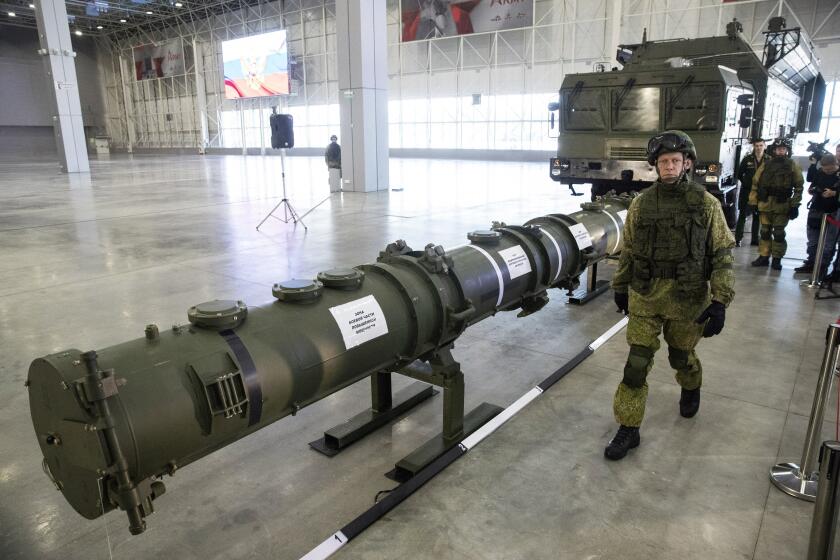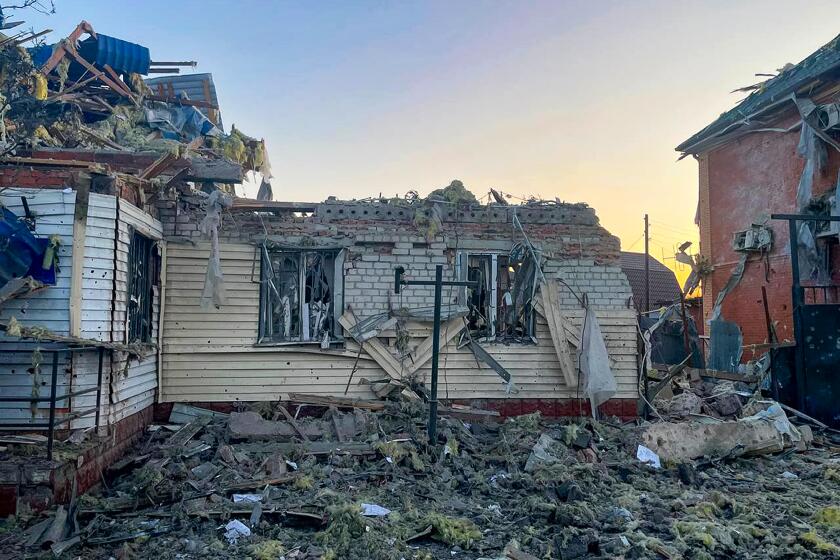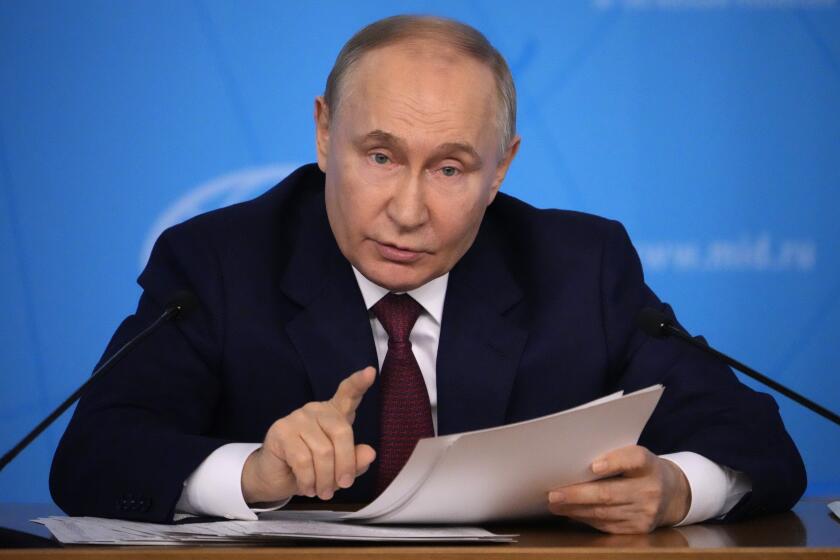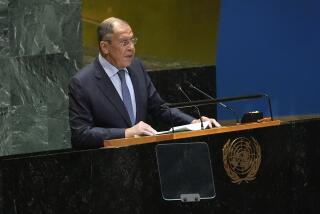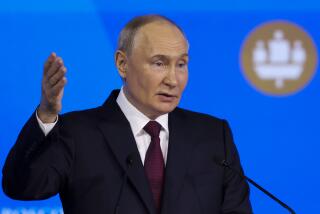Putin lowers the threshold for a nuclear response in new warnings to the West over Ukraine

- Share via
MOSCOW — In a strong, new warning to the West, President Vladimir Putin said Wednesday that any nation’s conventional attack on Russia that is supported by a nuclear power will be considered a joint attack on his country.
The threat, outlined in a revision of Moscow’s nuclear doctrine, was clearly aimed at discouraging the West from allowing Ukraine to strike Russia with longer-range weapons and appears to significantly lower the threshold for Russia to possibly use its nuclear arsenal.
Speaking at a meeting of Russia’s Security Council that considered changes in the doctrine, Putin announced that a revised version of the document states that an attack against his country by a nonnuclear power with the “participation or support of a nuclear power” will be seen as their “joint attack on the Russian Federation.”
Putin didn’t specify whether the modified document envisages a nuclear response to such an attack, but he emphasized that Russia could use nuclear weapons in response to a conventional attack posing a “critical threat to our sovereignty,” a vague formulation that leaves broad room for interpretation.
Russia is making slow but steady gains in Ukraine as the conflict grinds through its third year, and the Kremlin is seeking to discourage stronger Western support for Kyiv.
Russia’s Putin calls for resuming production of intermediate-range missiles that were banned under a Trump-scrapped nuclear arms treaty with the U.S.
The change in the doctrine follows Putin’s warning to the U.S. and other NATO allies that allowing Ukraine to use Western-supplied longer-range weapons to hit Russian territory would mean that Russia and NATO are at war.
Since Putin sent troops into Ukraine in 2022, he and other Kremlin voices have frequently threatened the West with Russia’s nuclear arsenal to discourage it from ramping up support for Kyiv.
The current doctrine says Moscow could use its nuclear arsenal “in response to the use of nuclear and other types of weapons of mass destruction against it and/or its allies, as well as in the event of aggression against the Russian Federation with the use of conventional weapons when the very existence of the state is in jeopardy.”
Russia’s hawks have been calling for toughening the doctrine for months, criticizing the current version as too vague and weak. They argue it has failed to deter the West from increasing aid to Ukraine and has created the impression that Moscow would never resort to nuclear weapons.
Ukrainian President Volodymyr Zelensky has said he will seek permission from his allies in the U.S. and Europe to use the longer-range weapons to strike deep inside Russian territory, another red line for some of Ukraine’s supporters. The Biden administration has said it hasn’t given Kyiv permission for strikes with U.S. weapons in Russia’s interior.
Putin accuses Ukraine of incursion into Russia as his officials say cross-border raids continue. Russia’s claims could not be verified and Ukraine’s government isn’t commenting.
Putin emphasized that the revised doctrine spells out conditions for using nuclear weapons in greater detail, noting they could be used in case of a massive air attack.
“Conditions for Russia’s move to use nuclear weapons are clearly stated” in the revisions, he said.
“We will consider such a possibility when we receive reliable information about a massive launch of air and space attack assets and them crossing our state border,” Putin added, citing “strategic and tactical aircraft, cruise missiles, drones, hypersonic and other flying vehicles.”
The broad formulation appears to significantly broaden the triggers for possible nuclear weapon use, compared with the current version of the document, which states Russia could tap its atomic arsenal if its receives “reliable information is received about the launch of ballistic missiles targeting the territory of Russia or its allies.”
Ukraine has repeatedly struck Russian territory with missiles and drones in response to Moscow’s attacks.
Russian President Vladimir Putin proposed a cease-fire if Ukraine withdraws troops from Russian-claimed areas and gives up its NATO bid. Kviv calls offer a ‘sham.’
The new phrasing holds the door open to a potential nuclear response to any aerial attack — a deliberate ambiguity intended to make the West more reluctant to allow longer-range strikes.
“Regardless of whether you think this is a bluff or not, it’s never good when a major nuclear power loosens the conditions for nuclear use in its declaratory policy,” said Samuel Charap, senior political scientist at Rand Corp., in a post on X.
Putin also said the revised doctrine envisages that Russia could use nuclear weapons in response to an aggression against its ally Belarus, adding that he has agreed on the issue with Belarusian President Alexander Lukashenko.
Lukashenko, who has ruled Belarus with an iron hand for more than 30 years, has relied on Russia’s subsidies and support. He has let Russia use his country’s territory to send troops into Ukraine and allowed the Kremlin to deploy some of its tactical nuclear weapons in Belarus.
More to Read
Sign up for Essential California
The most important California stories and recommendations in your inbox every morning.
You may occasionally receive promotional content from the Los Angeles Times.
